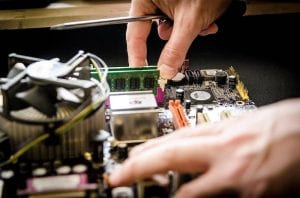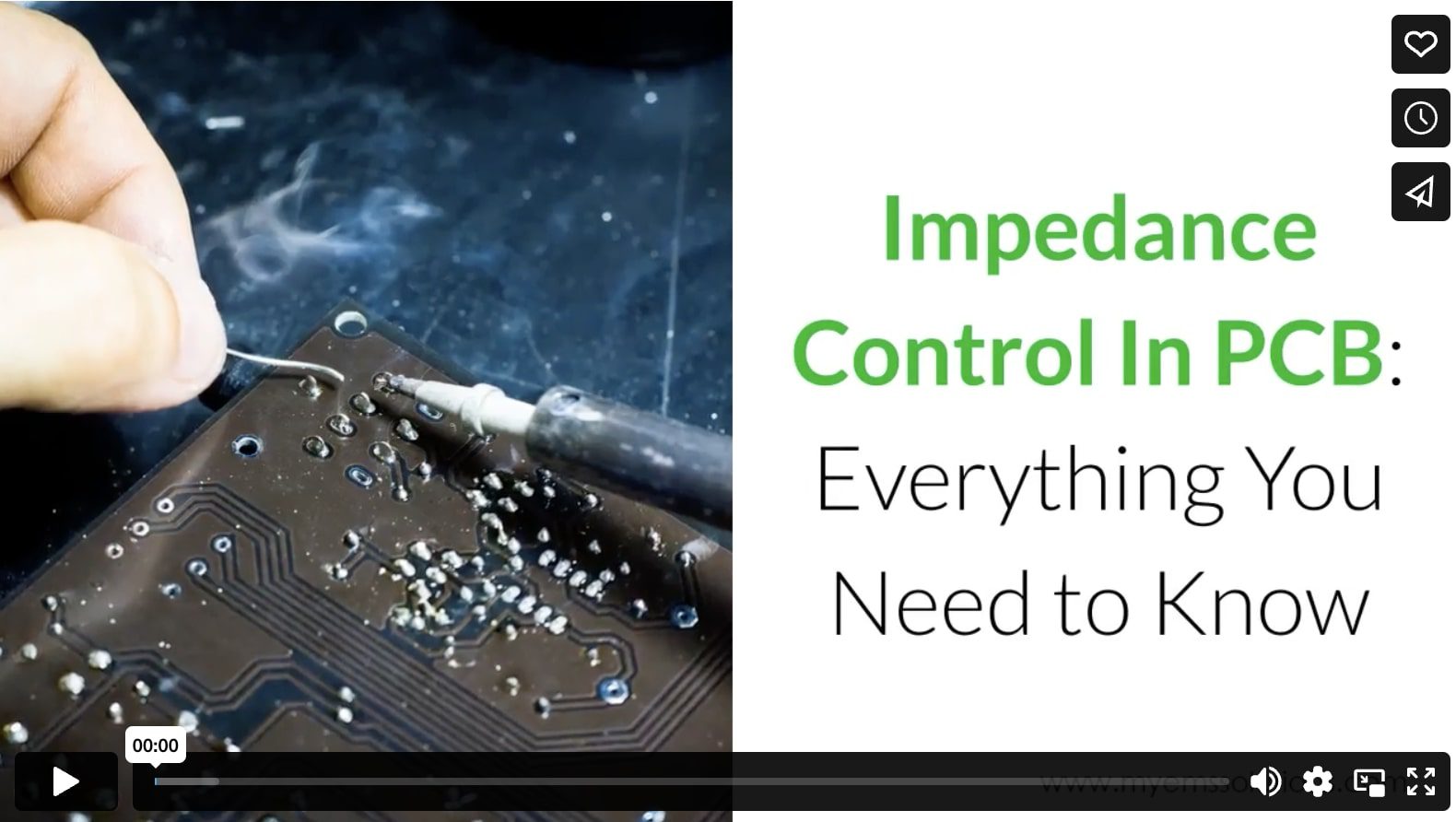Today’s electronic devices are fast. From a manufacturer’s perspective, controlling the basic components of these devices is the key to smooth operation at all levels. Printed circuit boards play an essential role in keeping these devices running smoothly, so they need to be developed with precision.
The days of basic interconnecting conductors and traces are long gone. Now, it’s critical to understand the crucial nets and traces and how the impedance control affects the performance and signal integrity of printed circuit boards. Doing so can help designers, manufacturers, and even retailers to put forth a high quality product. This article describes impedance control and its importance in high-frequency boards.

(jarmoluk / pixabay)
What Is Impedance?
Impedance in printed circuit boards is the result of the interaction of reactance and resistance. It’s used to measure the opposition of a current when an alternating current is applied to it. As an AC characteristic, impedance is related to the frequency and is expressed in ohms (Ω).
Whenever a signal is passing through a conductor with the same impedance as another given impedance, the transmission is ideal. If the impedance is different on both ends, it can affect the signals.
Controlled impedance is typically required in single-ended microstrip, embedded microstrip, stripline differential pair, and planar PCB transmission lines.
How to Determine Impedance?
Impedance is usually between 25 to 125 ohms in a trace, depending largely on the following factors:
- The width and thickness of a copper trace
- Signal passage
- Thickness of core or material thickness on both side of the trace
- Dielectric constant of core or material
- Distance from copper planes
- Presence of solder resist
Board designers need to acknowledge that their choice of the trace will directly impact the target impedance value. Some advanced tools can help in this calculation, which we will discuss later in the article.
What Is Impedance Control?
It is essential to have impedance control to maintain signal integrity for high-frequency usage. Impedance control is the process of measuring the impedance of the traces of a PCB to make sure they have enough strength. Due to the continually changing frequencies of new devices and products, impedance control has become a standard procedure in PCB manufacture. It is done on the following products:
- Digital and analog telecom
- Processing video signals
- TV boxes, internet box, cameras, GPS
- Computers, phones, tablets
- Motor control products
Why Focus on Impedance Control?
If a product needs a specific impedance to operate perfectly, controlled impedance is the way to go. PCBs used in high-frequency devices need equal impedance across the entire board to maintain a signal and not damage any data. More adaptation is needed for a higher frequency. Failure to control impedance at this level can lead to an increase in switching time on a circuit and lead to errors.
It is difficult to calculate uncontrolled impedance when the components are placed on a PCB. This is because components have different tolerances depending on their material, etc. Moreover, component specification is also affected by variations in temperature, which results in product malfunction. You may think that replacing a component is the best step, but actually, it’s that one unsuitable trace that’s responsible for the entire nuisance.
This is why it is important to measure the impedance of each trace before the PCB design is finalized. It is the hand-in-hand coordination of designers and manufacturers that can make a PCB compliant with appropriate values.
Calculating Impedance Control
Determining impedances on a PCB is very important and requires some very specific methods of measurement. Let’s take a look at some impedance control measures that are credible, accurate, and reliable.
1) Smith Chart
The Smith chart has been around before computers or PCB designing software was prevalent. The chart is used to describe the relationship between source and load impedance with the help of graphics. It also relies on an array of mathematical calculations to give you an impedance value for a particular trace.
2) Computer Simulation
The software of today uses complex technology to determine control impedance numbers. The benefit of these programs is that they can merge your design considerations into a simulation to see a virtually finished product. However, this type of software is typically expensive to buy and use for modeling a finished PCB design.
3) Online Impedance Calculator
Online calculators are much more efficient and widespread than design software with PCB impedance control features. You can find out controlled impedance for a trace through these calculators. These calculators are not as precise as the simulators, but you always get a ballpark figure to get the process rolling. Minor tweaking afterward can keep you in the safe zone because most of these calculators use standard numbers from the design guides for high-speed impedance boards.
All three methods listed above provide a good starting place for your calculations. No matter which method you adopt, you will start with a safe set of rules compared to no impedance calculation.
Factors that Affect Impedance Control
- Dielectronic constant – this is the ratio of a material’s electric permittivity to the electric permittivity present in a vacuum. It inversely varies with frequency in a printed circuit board. A challenging dielectric constant can affect impedance in surprising ways.
- Copper thickness – The impedance falls when the copper thickness rises. Reducing the copper thickness and weight would enable a higher impedance.
- Trace width – Ideally, PCB designers should formulate the base trace on temperature rise and capacity factors.
Overall, board designers and electronic manufacturing services professionals should consider various factors that could impact the product’s performance. That includes impedance control, as it can seriously impact the operation and signal integrity of the printed circuit board. Manufacturers can control impedance with the PCB trace’s configuration and the dielectric constant of the PCB material. If your impedance requirements are extremely specific, it’s best to convey your desired impedance tolerance and value in advance. Questions? Talk to our PCB assembly professionals for more help in understanding impedance control.
Video

